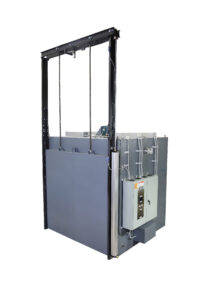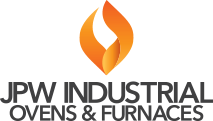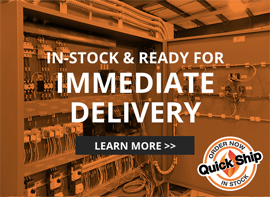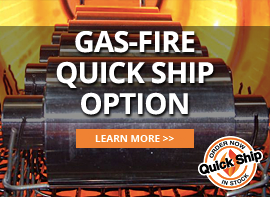
By offering a way to enhance the properties of metals and other materials, the annealing process is a very important part of many industries. For industrial manufacturers, understanding the best types of ovens to use for annealing can significantly impact production quality and efficiency. In this comprehensive guide, we’ll explore the ins and outs of annealing, the industries that rely on it, and which industrial ovens are best suited for the process.
What is Annealing?
Annealing is a heat treatment process that changes the physical and sometimes also the chemical properties of a material to increase ductility and reduce the hardness to make it more workable.
This specific process involves heating the material to a specific temperature, maintaining that temperature for a selected period of time and then cooling it down slowly. The main objective of the annealing process is to change the material’s structure at a microscopic level, leading to improved mechanical properties.
What Industries Use the Annealing Process?
Annealing is a process used in many different industries that would directly benefit from the enhanced material properties it produces. In the metalworking industry annealing is important for preparing metals for further processing. It allows metals to be easily cut, shaped, and formed without breaking or cracking, leading to more efficient production cycles.
The automotive industry also relies heavily on annealing. Car manufacturers use annealed parts to make sure that automobile components are strong yet flexible enough to withstand the demands of vehicle construction. Annealing is typically used for creating engine parts, frames, and various other components that require considerable amounts of strength, as well as durability.
Additionally, the electronics industry benefits from annealing. In the production of semiconductors and microchips, annealing helps improve electrical conductivity and remove impurities. This results in more efficient electronic devices and longer-lasting components. Glass manufacturing is another field where annealing plays a key role, particularly in the production of safety glass for buildings and vehicles.
What Types of Industrial Ovens are Best Used for the Annealing Process?
Choosing the best industrial oven for annealing is crucial to achieving the best end results for your needs as possible. Several types of ovens are used in the annealing process, each with unique features and benefits. Batch ovens are popular due to their versatility and ability to handle various materials and part sizes. They offer precise temperature control, ensuring uniform heating throughout the process.
Continuous processing ovens are another great choice. They are designed for high-volume production, allowing materials to be fed directly onto a conveyor belt that moves through the heating chamber. This setup provides consistent and efficient heating, ideal for large-scale operations.
How Can JPW Ovens and Furnaces Help With Your Annealing Processing Needs?
When it comes to industrial ovens, JPW Ovens and Furnaces stands out as a leader in the industry. With years of experience and a commitment to quality and innovation, JPW offers a range of American-made ovens designed specifically for annealing processes. Whether you require a batch or continuous process, JPW can provide a solution tailored to your specific needs.


